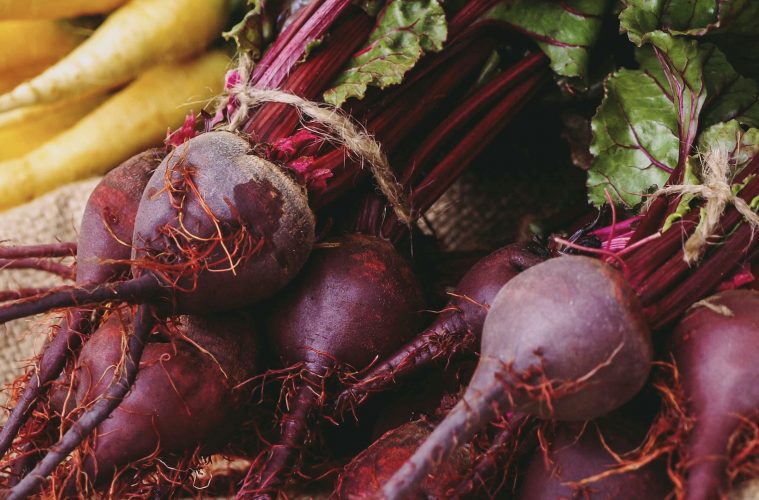What’s the quickest way to make a plate of food look rich with flavour? Add the attractive, deep crimson colour of beetroot. So that means the easy-to-grow plant is a definite ‘yes’ for your garden.
It was Aphrodite who was said to have eaten beetroot (Beta vulgaris) to make herself more attractive … likely because these striking vegetables are low in calories and rich in a variety of vitamins and minerals such as manganese, folate, vitamin B2 and antioxidants, which reduces the risk of cellular damage. Beetroot’s introduction to humans dates back to ancient civilisations, when the leaves and stalks were used in meals, and the roots were used for medicinal purposes. The greens are rich in iron, calcium and vitamins A and C, and a great source of fibre in your diet.
These bulbous veg can be grown in a veggie patch in your garden, or even in containers, and are relatively easy to look after. Choose from a variety of species in an assortment of colours, including the traditional red, pink candy-stripe, yellow and even white. Once you are ready to harvest, beetroots will make a great addition to a winter or summer dish, and can even be baked into delicious chocolate cakes or brownies to enhance the chocolate flavour.
Another unconventional way to use them is to puree and extract the juice, then reduce it to use as a natural dye in desserts, pastas or even textiles.
GROWING GUIDE
SOWING TIME: Spring to autumn
CLIMATE: Cool to moderate
LOCATION: Full sun
BEST FRIENDS: Lettuce, onions, French beans, garlic
BAD COMPANIONS: Mustard, runner beans
SOIL REQUIREMENTS
✢ pH 6.7–7
✢ Well-drained, deep, fertile loam
✢ Enrich with bonemeal.
✢ Directly sow 10–15 cm apart and 2.5 cm deep.
✢ Start sprouting in 1–3 weeks.
✢ Sow new seeds every 3 weeks until the end of planting season.
APPROXIMATE HEIGHT: 25–30 cm
PLANT SPACING
✢ Thin out seedlings when they’re about 2 cm, leaving about 12 cm spacing between them.
NUTRITION AND CARE
✢ Remove weeds; beets do not like competition.
✢ Keep well watered to avoid roots splitting, but do not overwater as this can lead to root rot.
PESTS AND DISEASES
✢ Cutworms
✢ Leaf spot – use copper soap
✢ Birds
✢ Slugs
✢ Snails
✢ Organic bioneem could be used to sort out insects or consult an expert at your nursery for more advice.
HARVEST
✢ Usually ready for harvest 45–80 days after planting.
✢ Start harvesting when the roots reach 5 cm in diameter, about 9 weeks after sowing seeds (about the size of a golf ball to a tennis ball).
✢ Check the size by gently removing soil at the base of the root with your fingers, being careful not to nick it.
✢ To harvest, hold the top and raise the beet plant under the root while gently pulling.
✢ Cut off the top growth of the beets immediately after harvesting or it will pull nutrients from the root.
STORAGE
✢ Use baby leaves in salads.
✢ Use larger leaves in stir-fries.
✢ Pickle extra beets to store longer.
✢ Store fresh beets in the fridge.
✢ Cooked beets can be frozen for a longer shelf life.
ALSO SEE 5 TIPS FOR GROWING VEGETABLES

